
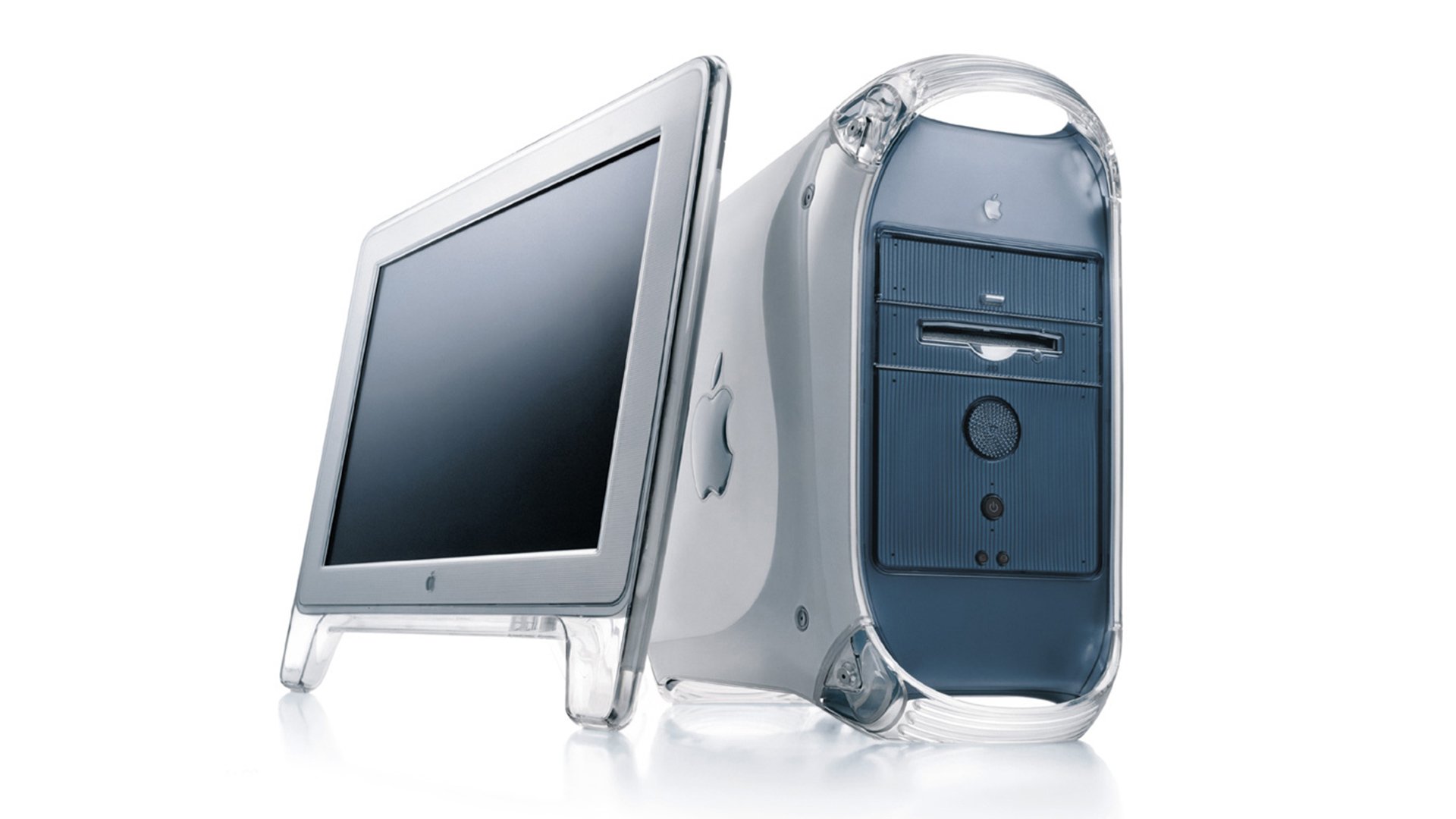
He's produced the most influential and iconic device designs of the century so far, and now he has left the company that fostered his work. Here's a look back at some of his most admired work, and we ask the question, what next for Apple without Ive?
The departure of Sir Jony Ive, Apple’s first (and only) Chief Design Officer, is said to have dropped Apple stock by 9 billion dollars.
But in truth, a 1.3% adjustment to the stock cap indicated a well handled exit for a man so closely associated with some of the most successful products in consumer electronics history.
At the height of their powers, the partnership between Steve Jobs and Jony Ive so defined Apple that their departure of either would seem to ensure Apple’s doom.
Didn’t Jobs’ previous 1985 departure lead to Apple’s ultimate near bankruptcy?
Wasn’t Apple all about design and Ive its internationally famous genius designer?
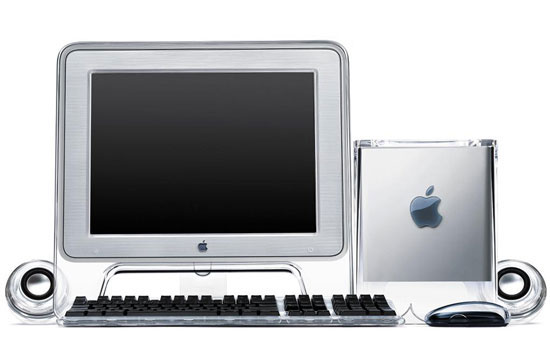
The G4 Cube
Apple Core Values
Although Jobs gave Ive a pass on stage presentations, Ive’s mellifluous voice-overs for Apple product introduction videos soon made him synonymous with Apple design.
Its hard to overstate the influence of Ive’s time at Apple - Jobs specifically re-structured the org chart so Ive answered to no-one other than him - but design has been fundamental to Apple since its inception.
Some of those welcoming Ive’s exit place the blame on him for Apple’s propensity for devices being hard to repair or upgrade, lacking easily replaceable batteries and so on.
It’s a critique that misses the point that Steve Jobs had a life-long obsession with making computers information appliances, mass market ‘bicycles of the mind’ that serve everyone, not just the tech elite who regard tinkering and upgrading as their prerogative. Never mind, if it adds cost and weight for the vast majority of people who’d never consider it.
At the time of the Mac’s inception, the engineering team had to hide its expandability from Jobs who would otherwise have ruled it out. For the most part, Apple’s decisions have been mocked, then copied by competitors as the insights proved true.
It’s also no accident that when Steve Jobs returned to Apple in 1997 and launched a global hunt for a new design chief, the winning candidate turned out to be already working at Apple.
From the outset, Apple was a partnership between Steve Wozniak’s technical wizardry and Steve Job’s visionary marketing abilities.
To paraphrase Jobs, Microsoft had the technical resources and all the money in the world to make an iPhone but it lacked the taste to do so. Bill Gates best illustrated this by mockingly dismissing the iMac as Apple leading in colours.
Ive’s iMac
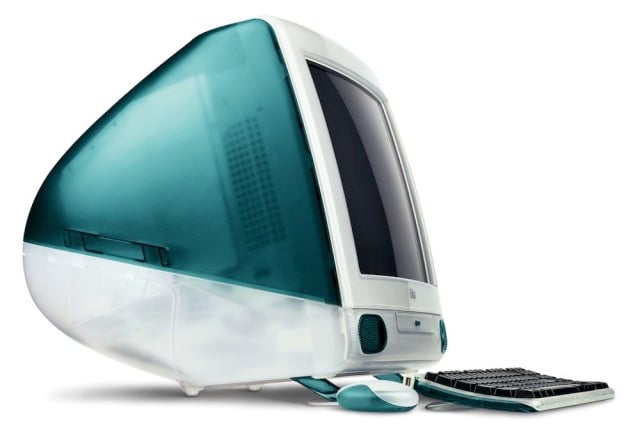
The iconic first generation iMac
Arguably the most critical of all the products Ive designed for Apple was the original iMac launched in 1998 with its iconic Bondi Blue translucent casing. It made some bold technical choices, omitting a floppy disk drive and adopting USB over Apple’s own ADB interface, but at its heart was System 8, the latest iteration of the OS launched 14 years before and showing its age against Windows 95.
To the tech savvy, such as Gates, there was a disconnect between the mundane specifications and the phenomenal media attention. But Jobs had correctly identified that people were bored with the bland beige boxes brought about by Microsoft’s PC monopoly.
The iMac wasn’t just a company saving hit for Apple, it sparked a cultural moment when it seemed like every product needed to be in translucent plastic. It put people, rather than business, at the heart of personal computing. Above all, it evoked an emotional response.
The iMac G3 was also a perfect illustration of why the partnership between Ive and Jobs was so important. Only a year before, Ive had deployed a similar, darker riff on translucent polycarbonate with the eMate clamshell laptop using the Newton OS. In many ways it was a more interesting product than the iMac, but it was also dour and niche and soon forgotten.
Whatever Ives’ design flair, its relevance was minimal without Jobs ability to focus media attention and ground it firmly in customer needs. The iMac bought Apple time to re-skin NeXT’s OS into a worthy interface for the many more multi-coloured iMacs that followed, but also firmly re-established Apple as a company to watch.
iPod
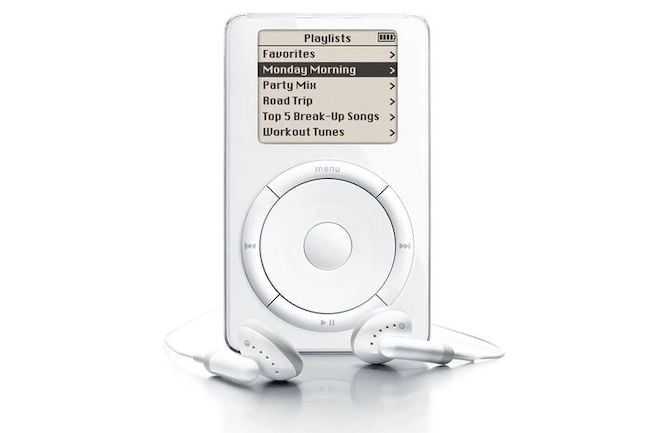
The original iPod
The 2001 iPod’s success owed much to Phil Schiller’s clever wheel UI and Jon Rubinstein’s purchase of Toshiba’s miniature new hard drive, but the ‘Walkman of the 21st century’ also benefited from a signature white and stainless steel design by Jony Ive. In a market already crowded with MP3 players, many of which had more features, the iPod’s look set it apart. Those who experienced its slick UI, including Bill Gates, immediately knew it was special. Its ease of use was the defining feature, but it was Ive’s design that made people want to experience it. The off-handed extension of the all-white look to the iPod’s supplied headphones soon carved out a distinctive brand identity. Apple Computer was becoming simply Apple - a consumer electronics giant.
The “Jesus” Phone
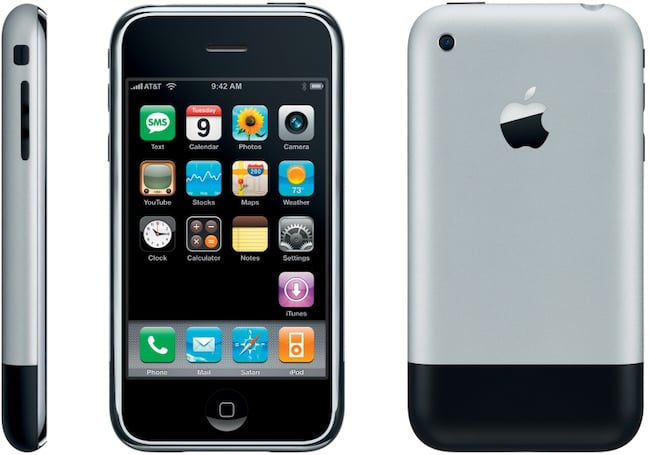
The first generation iPhone
Despite its status as one of the most influential products of all time, the original 2007 iPhone rarely tops anyone’s list of favourite iPhone designs. Just three years later, the steel-and-glass iPhone 4 - the ‘slimmest smartphone in the world’ - elevated smartphone design to an entirely new level.
But all that followed depended on the original’s success.
Media attention was a given for whatever Apple released. The runaway success of the iPod made Apple’s entry into the smartphone market critical.
The hype built to such a level that the media nicknamed it the ‘Jesus’ phone. Steve Jobs called it ‘a revolutionary and magical product.’
No-one anticipated quite how revolutionary it would be, but Ive didn’t waste Apple’s moment in the global spotlight. The thick chrome bezel highlighted that full colour, high-resolution multi-touch touchscreen above a single iconic single button, plus of course those famous rounded corners. Ive’s iPhone dazzled on magazine covers, shone in display cases and was unlike anything else on the market. Due to FCC regulations, Apple had to reveal iPhone six long months before it actually went on sale. Even after its release, stock shortages and a (then) high price of $499 ensured most people couldn’t experience its multi-touch UI and revolutionary features. Ive’s iconic design kept it in the public’s mind and established a fabulously lucrative brand identity.
While subsequent iPhones changed materials, slimmed down and eventually dramatically grew the screen size, for over a decade they maintained that iconic approach and the rigour of Apple’s design would be pivotal in the long-running legal battle with Samsung.
And as a final grace note to this phenomenal product’s success, when Apple finally moved to an all-screen display with 2017’s iPhone X, one of the two variants came with shiny stainless steel band that subtly, but unmistakably called back to the original model.
iOS 7
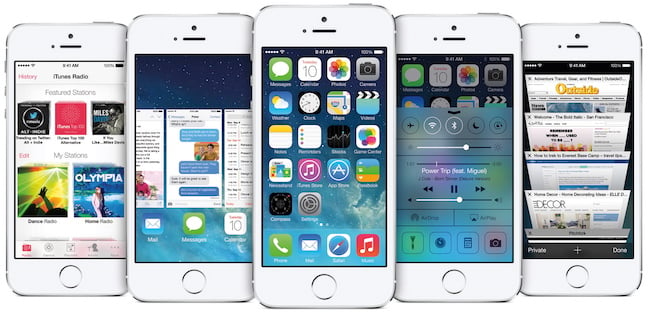
iOS 7
Jony was hardware design, Scott Forestall was software. Forestall started out at NeXT and was a key player in the Aqua user interface that so distinguished OS X from the competitors. Its ‘lickable’ UI was the software partner to Ive’s iMac. Forestall led the team that somehow shrank the Mac OS onto the first iPhone and carried across Jobs’ preferred skeuomorphic look that made iOS so immediately accessible.
But in 2012, Jobs was gone and Forestall’s introduction of Maps went awry. Exit Forestall who for a time had seemed Jobs’ successor as the lead ‘product guy’. By all accounts, Ive didn’t hesitate in seizing the moment and unifying software design under his remit. A wholesale redesign of iOS followed, stripping out almost every trace of skeuomorphism in favour of a sleek, minimalistic look Ive introduced as ‘profound in enduring beauty and simplicity.’
A year earlier, Microsoft had released the distinctly flat Metro design. Ive had never much liked skeuomorphism and notably declined to publicly comment on iOS. At a moment when iOS risked seeming outdated, Ive’s iOS 7 was pushed out at breakneck speed.
From 2013 onwards, the minimalism of Apple’s hardware design and iOS UI were finally in synch.
The original iOS had been hand crafted to fit a single screen size. iOS 7 not only looked fresh, it provided a design approach that would far more easily adapt to new screen sizes, new devices. All subsequent updates of iOS have been refinements of iOS 7.
Apple Watch
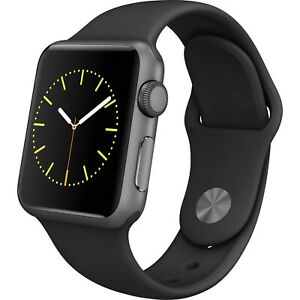
The first generation Apple Watch
From the moment Tim Cook became permanent CEO a singular question hung over him and Apple. Without Jobs, could Apple ever create another breakthrough innovative product?
Cook was an operations genius who’d transformed Apple’s supply chain and after Job’s demise nearly quadrupled the value of the company. But he wasn’t a product guy.
For a time, Jony Ive seemed to alone shoulder the mantle of carrying forward what had been a shared creative vision.
Apple Watch would not be an easy project. Apple engineers had become masters of miniaturisation but this was uniquely demanding. Ive had a obsessive appreciation of the craftsmanship which went into mechanical watches. It would be Apple’s most personal computer. It would also be Ive standing alone without Jobs to push and challenge him.
At its launch, Ive received a lengthy profile in the New Yorker titled ‘The Shape Of Things To Come / How an industrial designer became Apple’s greatest product.’
It’s as well Ive didn’t leave Apple then, but it would be his last major product introduction for Apple.
It’s said Apple Watch’s launch met just 25% of Apple’s expectations.
A year later it was ignominiously renamed Apple Watch 0 as its successor pivoted away from fashion and general computing toward health and fitness. The $10k solid gold options was dropped.
But that pivot came from the same basic design. The Digital Crown, Haptic feedback, heartbeat sensor and the hugely successful interchangeable wristbands.
Competitor products winning most design plaudits have been those that hark back to analogue watches and round screen faces. It’s to Ive’s immense credit that he followed the logic of functionality over form, maximising screen usability and also enabling a 44 and 42mm case design.
By the time of Ive’s exit, Apple Watch dominated the smart watch market with a 37% share.
Project Titan
Apple rumours often seem like next level marketing, whispering campaigns to get potential purchasers holding off to wait for Apple’s product even before its announced. For a time, it seemed like an Apple Car was the inevitable follow-up to Watch. From smallest to biggest. As many as a thousand engineers were devoted to the project in 2015.
Ive is renowned for his love of cars and he enthusiastically pitched Cook with a handmade prototype for a car without steering wheel. As Jobs often observed, a company is defined as much by what products it says no to as those it creates.
It’s said Ive was disappointed Cook didn’t value design as much as Jobs had. One wonders who could. Ive’s partnership with Jobs was like-minded, but hardly conflict free - there was a creative tension that pushed them both hard - not to forget the designers and engineers that worked long hours to realise their dreams.
To the question what becomes of Apple after Ive, there’s a degree to which this is where we already are right now. Apple employees may feel the benefit of what Cook called Ive’s most ambitious project - the $5 billion dollar Apple Park - but for many years Ive had been working away from Cupertino at his home in San Francisco. Maybe that’s why the new MacBook Air and Mac Pro seem like remixes of previous Ive products rather than something entirely new.
For many years, design flourishes were the centrepieces of Apple keynotes. Of late, design has hit headlines for other reasons with the MacBook’s low profile butterfly keyboard, the $1K monitor stand and Craig Federighi’s surprisingly blunt comment that badly received Catalyst apps were limited for design reasons, not technology.
It feels time for a renewal.
New device classes made possible by 5G, long rumoured ARM Macs, AR glasses...
“Wickedly intelligent”
Tim Cook’s memo marking Ive’s departure called him legendary, but it’s to Jobs we should turn to for Ive’s Apple eulogy. In conversation with Walter Isaacson, Jobs was unstinting in his praise:
“The difference that Jony has made, not only at Apple, but in the world, in huge. He is a wickedly intelligent person in all ways... He understands what we do at our core better than anyone. If I had a spiritual partner at Apple, it’s Jony... And he understands that Apple is a product company. He’s not just a designer.”
Tags: Technology


Comments